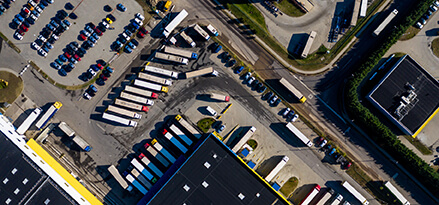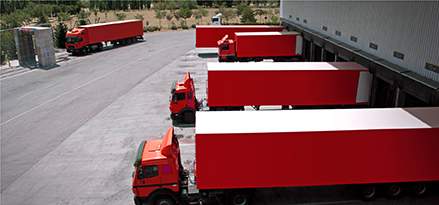
Fleet (Productivity)
‘Fleet management is under pressure. But it’s good pressure’
This could be Southeast Asia’s time. There is phenomenal potential for inclusive, sustainable growth. The middle class - which, according to the Brookings Institution, has already grown from approximately 40 million people in 2000 to almost 200 million today - is poised to balloon1. The Asian Development Bank is positive for the region’s recovery from the pandemic - with a predicted regional growth rate up from 4% to 5.2% in 2022 - and local businesses, buoyed by growing FDI and more structured engagement with foreign markets, are booming too2. Many local businesses are looking to regionalize and, as part of the process, to diversify their supply chains.
All these changes create a huge market for goods in a region that boasts some of the fastest growing and most innovative e-commerce markets in the world. Consumers and businesses in countries like Malaysia, Singapore, Indonesia and the Philippines increasingly rely on e-commerce platforms for goods sourced internationally and domestically.
In this context the opportunity for the road freight industry is clear. In their report on the Southeast Asian freight category, DHL predicted a CAGR of approximately 8% between 2020 and 2025. There are many tailwinds for road freight companies looking to outpace the competition in a high-growth market. For a start cross border regulation is becoming more structured meaning operators can transit cargo smoothly across much of Southeast Asia with a comprehensive assurance that includes both taxes and duties for the whole route. Perhaps more profound are the growing advantages road offers over shipping. Sea freight has not only been more impacted by the pandemic, with port congestion and fuel costs proving catastrophic, but it also experiences the benefits of the e-commerce boom less directly. Regional e-commerce giants are themselves making direct investments in road freight to ensure they can optimize costs, reduce time to delivery and even lessen environmental impact.

Whilst all of these tailwinds create an opportunity for road freight to capitalize on the region’s extraordinary demographic shifts, the opportunity won’t be easy to grasp. Business as usual won’t be enough in a fragmented industry that is offering so much space for transformation and creating a massive appetite for innovation. With margins on ‘traditional’ services remaining thin, fleet managers and owner operators need to embrace any opportunity to improve productivity. Not simply to get more output for a given input, but to achieve meaningful outcomes in a complex and time-constrained world. To rid themselves of the burden of low value tasks and reinvest dollars, time and energy into new ideas and technologies that will create disproportionate advantage. To liberate themselves and their people from menial, machine-related tasks and allow them to focus on more rewarding tasks or projects.
As guardians of productivity they need to focus on maximizing fleet utilization rate, minimizing idling time and reducing cost per kilometer. A major contributor to achieving the targets they set themselves will be investments made in optimizing their maintenance strategy. Investments designed to improve both the uptime of the fleet and the efficiency of the maintenance technicians. Key to this will be the smart optimization of lubricant investments including vendor consolidation, switching to extended life products and improving training on the appropriate use of lubricants. But perhaps the biggest game changer will be in the application of technology. Fleet managers and owner operators who lean into the data can institutionalize preventive and predictive maintenance by leveraging telematics and automated alerts to reduce breakdowns and shorten time to resolution.
“…recognize that even if the customer comes first, the driver comes just before.”
Many of the productivity challenges will also lie in talent management. Drivers are increasingly hard to attract whilst the data and technology specialists required to maximize the automation opportunity are expensive to onboard. Fleet managers and owner operators will need to recognize that even if the customer comes first, the driver comes just before. They need to demonstrate to their drivers that, above everything, they value the wellbeing and safety of those on the road. That time to delivery is not as important as ‘time to home’. Once again this will require these decision makers to find the balance between sticking with what they know and embracing the unfamiliar. Proven protocols and processes can’t be compromised. Trusted partners for supplies must be kept close. But new software solutions should be leveraged to ensure ‘positive productivity’ - productivity ensures drivers deliver on time every time, but gets them safely to bed each night.
In a region that is changing so much, scale can’t be guaranteed, customer relationships are up for grabs and talent shortages are inevitable. Fleet managers and owner operators will be under greater pressure than ever but it will be ‘good pressure’. Good pressure because the reward could be huge and the opportunities to reinvent their role endless.
Mobil has been an innovator in the lubricants game for over 150 years. Our continuing investments in research and development have ensured our lubricants always deliver the highest performance in the market. But now we are pushing harder to give fleet managers and owner operators an advantage in operational efficiency, proactive maintenance and vehicle productivity by integrating advanced analytics services into our offering. We will continue to deliver the market leading formulations our customers rely on but also place data-driven intelligence trends in the palm of your hand - the perfect pairing as you look to get ahead of the unknown.
Citations
- Asia’s tipping point in the consumer class - The Brooking’s Institute, June 2022
- An integrated and Smart ASEAN: Overcoming adversities and achieving sustainable and inclusive growth - Asian Development Bank - May 2021
Sources
ASEAN and pandemic recovery: Economy before strategic rivalry - The Interpreter, July 2022
Current and Potential Opportunities for Road Freight in Southeast Asia - Logistic Jobs Asia, July 2021
Measuring Fleet Productivity And Managing Downtime With Telematics - Geotab, February 2022
7 Ways to Maximize Fleet Productivity - Fleetio, April 2021
Bringing New-Gen Fleet Management to the APAC - Techwire Asia, 2022
11 Biggest Productivity Challenges Fleet Managers Face - Mix Telematics, 2022
Asia-Pacific Report - IRU, 2022
An integrated and Smart ASEAN: Overcoming adversities and achieving sustainable and inclusive growth - Asian Development Bank - May 2021
Asia’s tipping point in the consumer class - The Brooking’s Institute, June 2022
Southeast Asia Freight: The Road to Growth - DHL, 2021

